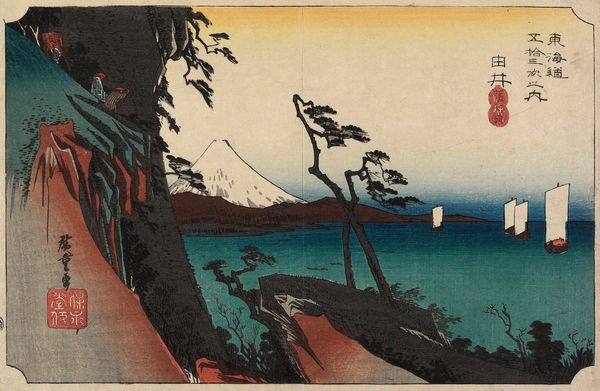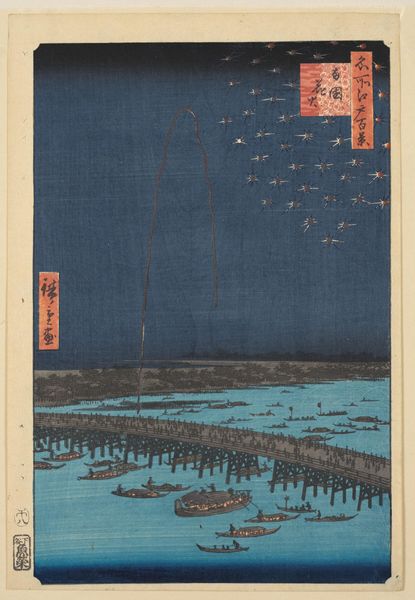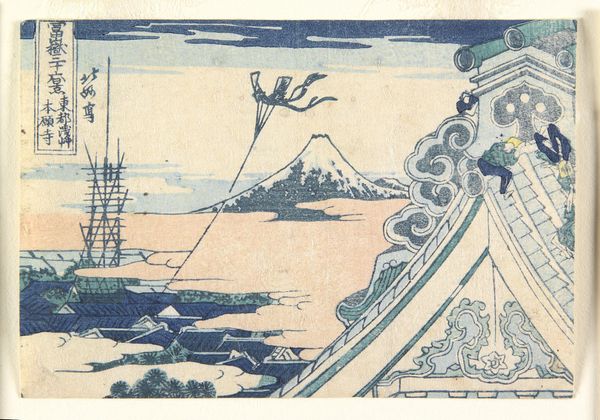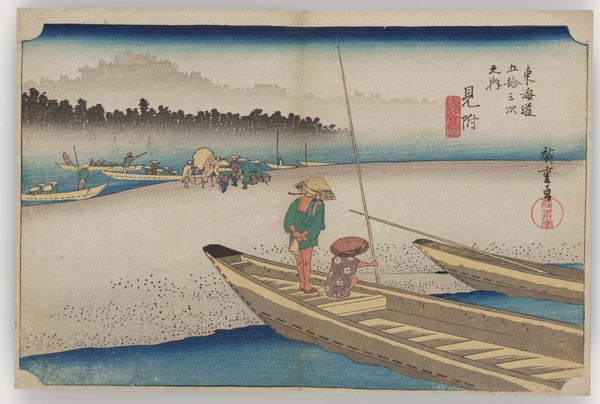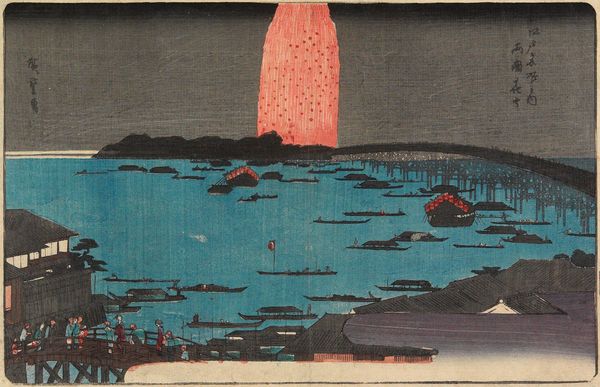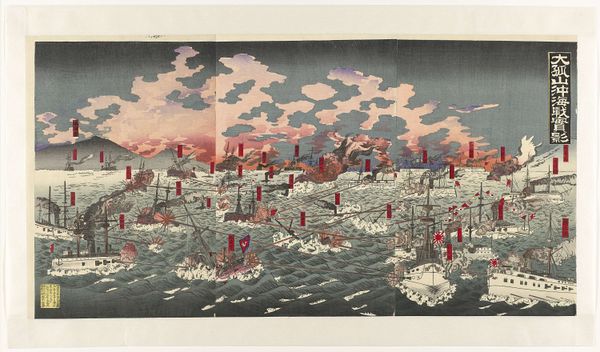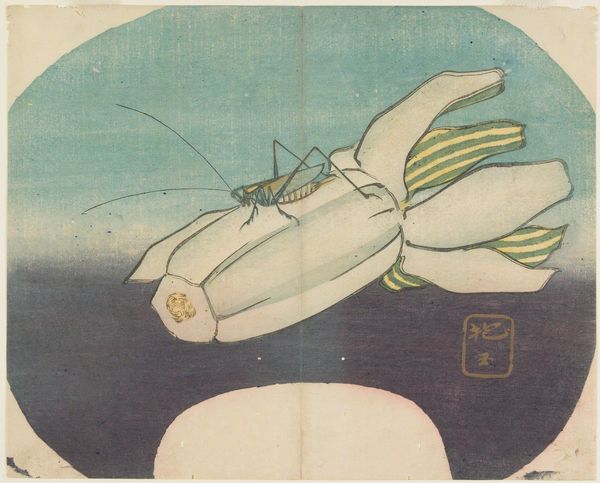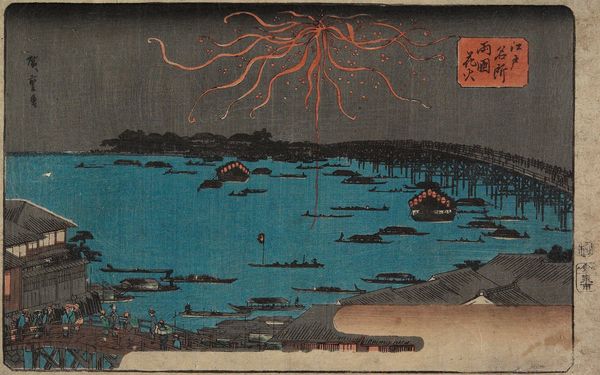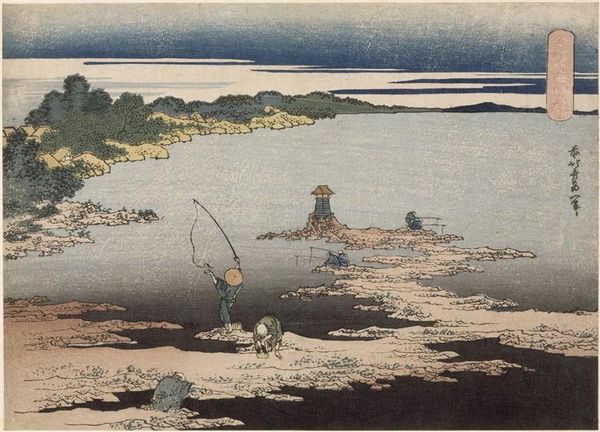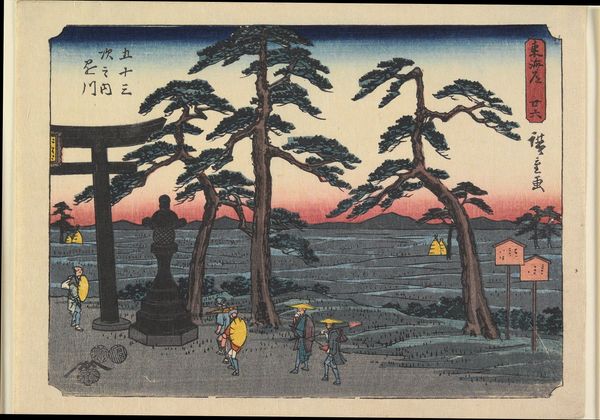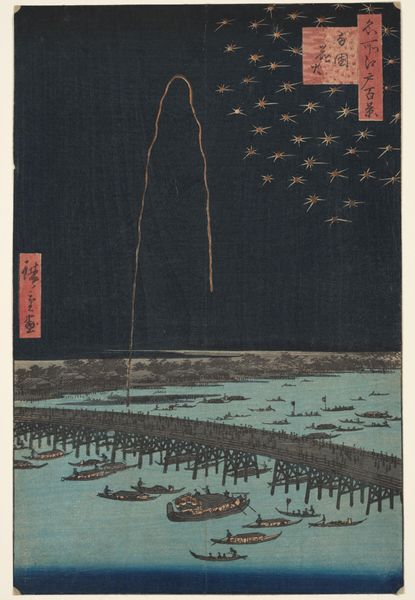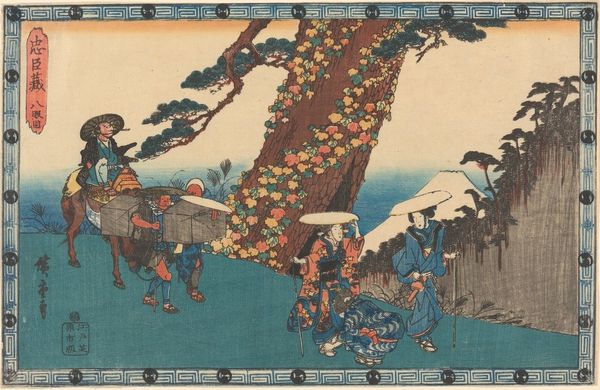
print, paper, watercolor, ink
# print
#
asian-art
#
landscape
#
ukiyo-e
#
japan
#
paper
#
watercolor
#
ink
#
coloured pencil
Dimensions: 8 3/4 x 13 11/16 in. (22.2 x 34.7 cm) (image)9 3/8 x 14 3/16 in. (23.8 x 36 cm) (sheet)
Copyright: Public Domain
Editor: Here we have Hiroshige’s "No. Fukuroi" from between 1847 and 1852. It's a Japanese woodblock print, featuring these vibrant kites against a tranquil landscape. There's something quite dreamlike about the whole scene. What's your take on this print? Curator: What I see here, beyond the picturesque scene, is a representation of social dynamism within the rigid structure of Edo-period Japan. These kites, symbols of aspiration and freedom, disrupt the traditionally prescribed landscape. The careful rendering of ordinary people on the road below suggests a focus on their daily existence. How do you see the kites functioning within the composition? Editor: I see the kites drawing my eye upwards and giving an uplifting feeling, maybe symbolic of hope? The print has a peaceful vibe too. Curator: Exactly. Hiroshige was not merely depicting a scenic view. He was reflecting a changing society, with rising merchant classes finding new forms of expression and leisure, symbolised by the kites. Note also how these kites, each distinct in their design, can be seen as asserting individual identities within a collective space. In a way, these kite designs are a visual articulation of cultural hybridity - tradition infused with contemporary aspiration. Editor: That's a very insightful way to put it. I wouldn't have picked up on that layer of meaning myself. Curator: It is vital to consider artistic intent, but equally important is the social agency that the artworks enable. By subtly infusing symbols of individual desires into established landscapes, Hiroshige initiated quiet conversations about social mobility and cultural identities. Do you feel it prompts any questions relevant today? Editor: It does makes you wonder, in what ways we negotiate social constraints today and if there are ways for everyday people to assert their individuality in a social context? Thanks that's really helpful. Curator: Indeed. Looking through an intersectional lens always reveals deeper nuances, prompting us to consider both historical context and our own present realities.
Comments
No comments
Be the first to comment and join the conversation on the ultimate creative platform.
